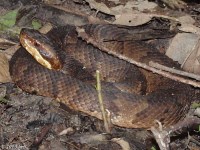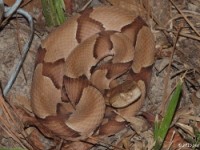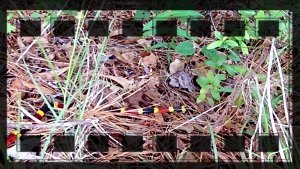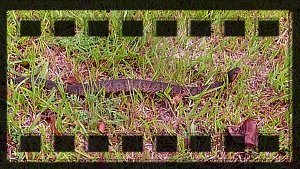Our
Observations on Snakes
|
|
Some
characteristics of snake behavior are
accurate the majority of the time.
What throws a curve in this behavior
is the fact the creeks in
the
preserve
are mostly
spring fed with
cool
water. So, things often run on a cycle
different than expected. When the air
temperature
gets above
65 F
in the
spring, snakes
come out in a hurry. Rat snakes and
ribbon
snakes
come out first. Racers, Coachwhips,
and the venomous snakes
seem
to come out when
it gets above
75 F. When it gets above 90 F, most of
the snakes go nocturnal.
|
|
Cottonmouth:
In
east Texas, if you see one over three
ft., you have seen a monster. They
hold their ground if you get close,
very seldom
run and
will display with a wide
open
mouth. They hang around close to
water, but also like thick brush cover
with weeds and thorny bushes.
The majority
of
the ones we have seen are right at
sunrise or sunset.
Look
close at the head and eyes, thats the
key to identifying them.
|
|
Copperheads:
Three ft. is about the maximum length
on these, but they can get a big
girth. Some are aggressive, others are
not. They like
to
eat toads.
They hunt in medium grass
and
short brush country and the majority
of the ones we have seen are at
sunrise and sunset. They also
like heavy
leaf litter,
no doubt due to the fact that you
can't spot them if they
stay
stationary. Some will run from you,
others will not. They
will vibrate their tail if spooked.
|
|
Coral
Snakes:
Four
ft. is about the maximum length on
these.
Three ft. is more common. They
can move very fast over a short
distance.
Look out during or right after a light
cool
rain
on a hot summer day. This is when we
most often find them.
|
|
|































